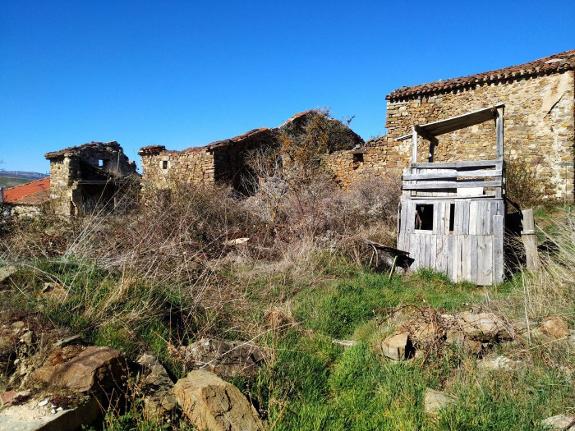

Sections
Highlight

ALFONSO TORICES / NEIL HESKETH
Friday, 5 April 2019, 09:53
Compartir
Up to 100,000 people from towns and villages in rural areas in inland Spain took to the streets of Madrid last Sunday. They were calling on the government and all political parties to take urgent action to stop the fall in the numbers living in places outside the big urban areas, where the population is declining leading to a reduction in services and, in some cases, whole villages becoming empty.
Half of Spain's municipalities have a population of under 500, which means basic services like schools and bus links are disappearing, as younger people move to larger towns to find work and the population left behind grows older.
The decline has been under way for many decades but now a group of 90 different residents and business organisations from across the 26 worst-affected provinces have decided to join forces to call for action.
Among the most vociferous in the good-natured protest were whole families from Soria and Teruel, the least-populated provinces with only 10 inhabitants per square kilometre.
At the head of the group named "Soria Now!", (Soria ¡ya!), Sonia Martínez said, to the applause of those around her, "We want to be heard for once. We're really fed up. We've been completely forgotten about in terms of communication links, companies, work... and every day it's getting worse. All our young people have to leave because in Soria they've got no future. I think it's time we were listened to."
The march, which ended with the reading out of a list of demands for Congress, was full of banners and placards, such as, "I want to live in my village," "If the countryside doesn't produce, the city doesn't eat," or "Lack of investment brings depopulation."
Organisers asked for the marchers to be politically neutral, although representatives of all parties took part. In the forthcoming general election on 28 April, the smallest provinces have a disproportionate say in deciding which party governs, under the structure of the proportional representation system, especially in the Senate, and so all politicians were keen to court this rural vote.
Some 53 per cent of Spain's surface area is home to only five per cent of the total population, mostly in central areas. Between 2009 and 2018 the total national population hardly changed, but the distribution got worse. The province of Zamora lost 12 per cent of its residents over the period; Cuenca 10 per cent; Teruel nine per cent; and Orense and Ávila over eight per cent. As a comparison, Malaga and the Costa del Sol grew three per cent in the same period.
Publicidad
Publicidad
Publicidad
Publicidad
Reporta un error en esta noticia
Necesitas ser suscriptor para poder votar.